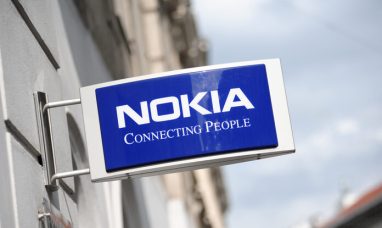Today, we’ll take a look at a small-cap biotech firm whose stock has gone through the wringer despite having one authorized product on the market and several possible catalysts on the horizon. Is the stock market’s crash overstated? A detailed analysis/recommendation is provided below.
Overview of the Company
ADC Therapeutics SA (NYSE:ADCT) is an early commercial-stage biotech based in Épalinges, Switzerland that is focusing on the development of antibody-drug conjugates (ADCs) for oncology applications. Zynlonta (loncastuximab tesirine-lpyl) is the company’s only licensed medicine for the treatment of diffuse large B-cell lymphoma (DLBCL) in the third or later line. It is also being tested in earlier treatment lines for DLBCL and non-Hodgkin lymphoma, and four other trials are exploring a variety of oncological targets. ADC was founded in 2011 and went public in 2020, generating $244.2 million in net revenues at $19 per share. The stock is now trading at around $2.25 per share, resulting in a market capitalization of approximately $185 million.
Drug Conjugates of Antibodies
ADCs, as opposed to systemic medications like chemotherapy, are targeted therapeutics for cancer treatment. They are made up of a monoclonal antibody [MAB] that targets the cancer cell, a cytotoxic payload (warhead) that kills it, and a linker that connects the two to prevent the payload from disengaging from the antibody before reaching its target. ADCs have been available since Pfizer’s Mylotarg was licensed in 2001 for relapsed acute myelogenous leukemia (AML). Due to issues with linker technologies and payload resistance, just two more were allowed during the next 15 years. There are presently 13 ADCs on the market, including Zynlonta.
The approach of the Company
Management believes that the unique feature of its programs is the use of pyrrolobenzodiazepine [PBD] dimer warheads, which, once inside the target cell, bind irreversibly to DNA without distorting the double helix, evading the DNA repair mechanisms that have degraded the effectiveness of other ADCs and allowing them to kill cancer cells. PBD warheads are 100 times more powerful than warheads on other commercial ADCs, allowing for longer-lasting responses. These next-generation PBD warheads are less hydrophobic, which makes them easier to excrete once they are outside the tumor microenvironment, resulting in less off-target toxicity and easier manufacturing. The PBD technology was initially licensed from Spirogen, which is now part of AstraZeneca (AZN). ADC has no outstanding financial obligations related to that license.
Zynlonta
The FDA approval of CD19-targeting Zynlonta in 2021 (EU 2022) supported the PBD strategy. In its pivotal trial, which required a 30-minute infusion once every three weeks, it achieved complete responses [CRS] in 24.8% of third-line or later DLBCL (and other related) patients (n=145) and an overall response rate (ORR) of 48.3%. It generated FY22 revenue of $74.9 million, but that figure isn’t expected to climb meaningfully in FY23, as the potential entry of bispecific therapies – including AbbVie (ABBV) and Genmab’s (GMAB) recently approved epcoritamab – and a patient population of just greater than 6,000 in a third-line plus setting is somewhat limiting, meaning substantial additional contributions from Zynlonta will only occur if it can transition to earlier lines of care.
To that end, it is being evaluated in three trials: a Phase 3 study in combination with anti-CD20 mAb rituximab in a 2L setting (LOTIS-5); a Phase 2 trial in combination with rituximab in a 1L setting of unfit or frail DLBCL patients (i.e., the 15% of the patient population that cannot handle standard-of-care R-CHOP chemotherapy) (LOTIS-9); and a Phase 1b LOTIS-5 is expected to be completed in 2024, while LOTIS-9 and LOTIS-7 are expected to produce preliminary data that same year. A move to the front lines of DLBCL care, according to management, would expand Zynlonta’s market opportunity from $500 million to $1 billion.
Zynlonta has secured two licensing agreements. The first was signed in January 2022 with Mitsubishi Tanabe for Japan, with a $30 million upfront payment and future milestone payments totaling $205 million, as well as royalties in the high teens to low twenties. That was followed by a deal with Swedish Orphan Biovitrum (Sobi) for all territories excluding Japan, Singapore, the United States, and Greater China, which generated $55 million upfront in July 2022 and another $50 million when Zynlonta was approved for the EU in December 2022. ADC is entitled to an additional $332.5 million in milestones and royalties ranging from the mid-teens to the mid-twenties.
Tesirine Camidanlumab (Cami)
Zynlonta is predicted to earn $80 to $90 million in revenue in FY23 (net sales of $19 million in 1Q2023, up 15% Y/Y), yet its owner only commands a $185 million market value due to two factors. Cami is one of them. It is a CD25-targeting ADC that uses the same PBD technology that was successful in a Phase 2 trial for relapsed/refractory Hodgkin Lymphoma [HL]. Annual new occurrences of HL are estimated to be 18,000, yet the disease – a lymph node cancer that can spread to the liver, lungs, and bone marrow – is extremely treatable, with an 87% five-year survival rate. However, many patients may not respond to treatment and require a second line of defense.
Cami achieved a CR in 39 (33.3%) patients and a partial response [PR] in 43 (36.8%) patients in a 117-patient Phase 2 trial in a 3L scenario (or at least 2L if the patient was ineligible for hematopoietic stem cell transplant), for an ORR of 70.1%. The trial was successful enough in terms of efficacy that management planned to file a BLA for fast approval of Cami for HL in a 3L context.
Cami’s plans were interrupted by two events. First, its Phase 2 and Phase 1 investigations were put on hold because of individuals with Guillain-Barré syndrome (GBS). GBS, a disease with symptoms similar to polio, was found in 12 participants throughout the two trials. Cami’s development through the clinic was delayed by at least a year due to this adverse event profile between the Phase 1 and Phase 2 investigations. The fast approval pathway window was closing at the time, following significant backlash following the FDA’s accelerated approval of Biogen’s (BIIB) Alzheimer medication aducanumab. As a result, the FDA informed ADC that in order for Cami to be considered for fast approval, a confirmatory Phase 3 trial must be well underway (and most likely completely recruited) at the time of BLA submission. As a result of this decision, the business has de-emphasized Cami’s development and is now looking for a partner to help it reach the regulatory finish line.
Other Clinical Resources
ADC chose to reallocate its resources in order to increase the patient population for Zynlonta and develop other products through the clinic. These assets include KAAG1-targeting ADCT-901, which is being studied as a monotherapy in a Phase 1 dose escalation trial in various solid tumors; AXL-targeting ADCT-601, which is being studied as a monotherapy in a Phase 1b dose escalation trial in various solid cancer indications; and CD22-targeting ADCT-602, which is being studied as a monotherapy in a Phase 1 dose escalation trial in acute lympho – Initial clinical findings have been described as encouraging, with full results expected in 1H24. The other two studies will offer preliminary data in the first half of 24. In order to cut costs, the corporation just fired off 17% of its workers.
Analyst Commentary & Balance Sheet
The company’s balance sheet is another impediment to raising its market cap. At YE22, ADC had $326.4 million in cash and equivalents versus $322.1 million in debt, which included $225 million due on a royalty purchase agreement with HealthCare Royalty Partners (HCRX). That financial sheet snapshot does not include Sofi’s $50 million milestone payment or HealthCare’s projected $75 million milestone payment following its first EU commercial sale. These capital injections will give ADC a cash runway until mid-2025. If the $75 million is received, the overall cap on the company’s 7% royalty commitment to HealthCare Royalty will rise to $750 million.
The Street is split on ADC, with one buy and two outperform ratings against three Hold/Neutral ratings. Their 12-month price target is $9.00 on average. Bank of America assigned the underperform rating after downgrading the company (from a hold) on April 24, 2023, citing Zynlonta headwinds, which drove ADCT shares down 15% in one day to $1.96. Since then, the stock has recovered.
It didn’t help that a strangely priced secondary offering of 12 million shares by selling shareholder Auven Therapeutics in early February 2023 appeared to place around half of the shares in weak hands, adding to the downward pressure. The derogatory term ‘suspicious’ is used since the $5 per share price was near the top tick in its stock since September 2022, despite no market-moving news preceding the transaction. Shortly after, Fidelity sold its remaining 4.6 million shares (6%) holding through traditional channels, putting pressure on ADCT shares. Auven still owns 8% of ADC. Redmile Group became a beneficial owner at 16.8% as a result of the secondary, having previously lost 61% on the six million shares it purchased in February.
Bottom Line
Apart from Zynlonta sales, which are not expected to expand significantly, there isn’t much to stimulate investment in 2023.
One exception is a collaboration that would move Cami into a conformational Phase 3 research. Given the GBS concerns and the relatively modest Hodgkin lymphoma market (estimated at $1.1 billion globally by Expert Market Research), the chances of a game-changing acquisition are slim. Stay on the sidelines until it creates a base around $2 and then reevaluate near YE23.
Featured Image: Freepik @ freepik









